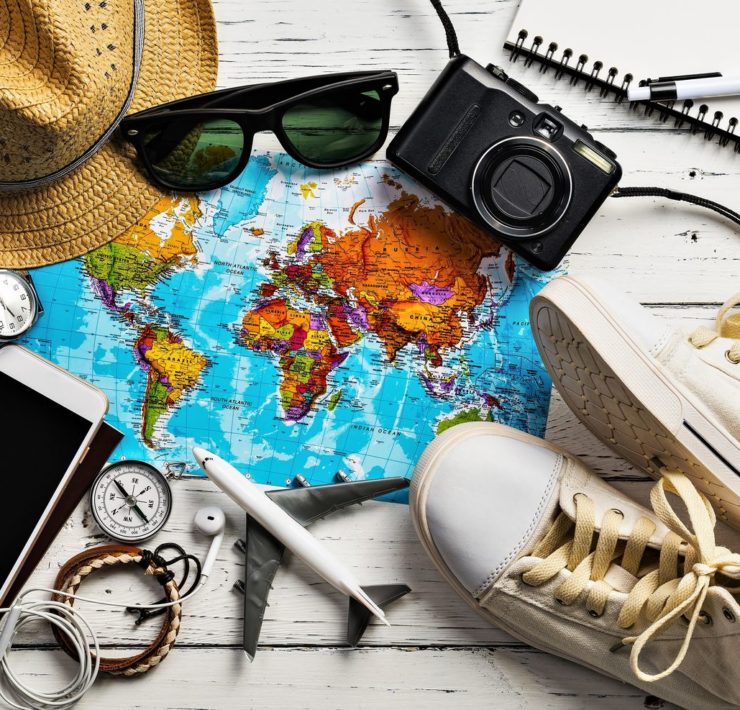The plane is open for boarding. You get your luggage and bags and head in the line going to the aircraft. Find your seat, put your carry-ons in the overhead shelf, sit, be comfortable, fasten seatbelts, and prepare yourself for take-off. The plane slowly rises to the sky and as it prepares itself for the real departure, something uncomfortable happens. It doesn’t happen every time you’re inside the plane, but it’s not uncommon to feel that weird pressure when taking off and landing, making your ears hurt or worse, end up with a temporary hearing problem.What causes this ear pain? This pain happens during air travel when the pressure inside the ear is different from the pressure outside it. The Eustachian tube that connects the inside of your ear to the back of your nose gets blocked or obstructed during this time which makes the middle ear pressure unable to equalize. The air already formed inside the ear gets absorbed and sucks the eardrum inward and stretches it, causing to make hearing problematic. When the Eustachian tube remains block, a fluid seeps into the area from the membranes in an attempt to overcome the vacuum, which causes dizziness and hearing loss.
But no need to worry for there are different ways to stop getting these annoying ear pains (ear barotrauma). Here are the different ways to fight it for a more comfortable flight.
1. Decongestant Pills
This isn’t proven to help reduce getting ear pain during flights, but taking a decongestant tablet or syrup was said to be helpful. These decongestants that contain pseudoephedrine in tablet or syrup form can be taken half an hour before take-off. These shrink the membranes and help the ears pop more easily. Nasal sprays are also available. Making it a habit to take decongestants however, is discouraged.
2. Swallowing
Swallowing activates the muscles that open the Eustachian tube. It can occur more often when chewing gum or when sucking on hard candies.
3. Yawning
Yawning also opens the Eustachian tube and allows air to flow into the middle of the ear. It helps equalize the pressure on either side of the ear drum. But better be sure that you don’t sleep during ascent or descent because the act of swallowing might not occur enough to keep with the pressure changes.
4. Frenzel Maneuver
To equalize pressure in the middle ear, the Frenzel maneuver is done by the following steps: pinch your nose, fill your mouth up with air like a balloon, close the epiglottis by stopping the air from entering your throat, move the soft palate (the soft fleshy part in the upper back of your throat that raises when you breathe through your mouth)in your mouth to neutral position, and use your tongue as a piston to push the air towards the back of your throat.
5. Politzer Maneuver
The Politzer Maneuver or Politzerization is a medical procedure that involves inflating the middle ear by blowing air up the nose during the act of swallowing.
6. Toynbee Maneuver
The Toynbee Maneuver is simply done by pinching the nose and swallowing. With the nose closed, the tube opened by swallowing can let the compressed air created by tongue movement pass through.
7. Valsalva Maneuver
The Valsalva Maneuver is performed by pinching the nose, closing the mouth, and trying to breathe out through the nose, pressing out like blowing a balloon.
8. Lowry Technique
The Lowry Technique is a combination of Valsalva and Toynbee maneuvers wherein you need pinch the nose to close the nostrils, blow building pressure inside, and swallow.
9. Edmonds Technique
Edmonds Technique is done by combining either the procedures in the Valsalva or the Frenzel maneuvers with a head tilt or a jaw thrust by pushing the jaw forward and down.
10. Balloons
We’re not talking about colorful party balloons here. To stop getting pain during a flight and clear blocked ears, blowing up a special balloon that is attached to a small tube is almost the easiest. The tube is placed in one nostril where you will inflate the balloon while keeping the other nostril closed with a finger and with your mouth closed. The blown up balloon is then deflated by inhaling the air out of it through the same nostril. The exercise is done again using the other nostril. Using these special balloons such as Otovent is recommended for children.
Don’t forget about babies! Babies cannot intentionally pop their ears but you can prevent them from having ear pains by letting them suck on a pacifier and feeding them. Make sure that they don’t sleep during the flight’s ascent or descent.
These steps in relieving yourself from the ear problems that might occur during air travel can also be used by scuba divers. However, when doing these steps, especially when pushing pressure to the ears, make sure to not overdo it and use excessive force. If these methods don’t work, it’s best to consult your doctor.
When On Earth Magazine is for people who love travel. We provide informative travel guides, tips, ideas and advice regarding places to see, things to do, what to taste, and much more for world travelers seeking their next dream vacation destination.







